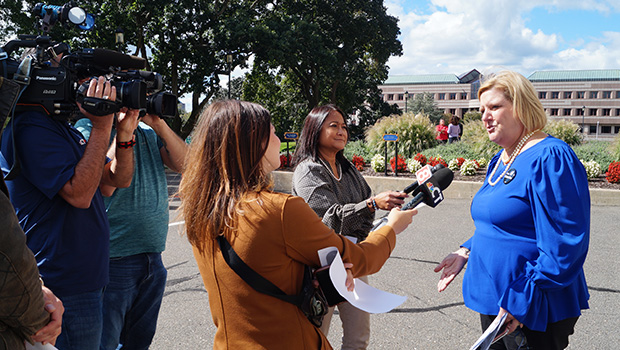Guidelines are inequitable; flout legislative ban on dual teaching
The State Department of Education (SDE) yesterday released remote learning and dual instruction guidance that is not good educational practice, is inequitable, and jeopardizes the education of our most vulnerable students. It also violates a law passed during the 2022 legislative session prohibiting dual teaching—the practice of having one educator simultaneously teach students online and in person.
“The new guidance blatantly defies the statutory ban on the inferior practice of dual teaching that was passed by the legislature and signed by the governor earlier this year to ensure students receive the best education possible,” said CEA President Kate Dias. “This guidance disrespects our legislators, teachers, and the families of our neediest students. It brings back one of the worst, most inequitable educational practices for our students.”
Dias explained, “During the pandemic, we experienced firsthand the disruptions and inequities of dual teaching. Reviving this flawed approach to instruction goes against everything we know about sound educational practice and everything we learned from the pandemic.”
Among other things, data gathered during the pandemic discovered that
- The worst educational practice during the pandemic was dual teaching, which divided students’ and teachers’ attention, diminished engagement for all students, and was especially detrimental to students with the greatest needs.
- In-person learning produces the best outcomes for students.
- The greatest learning loss during the pandemic, as noted in the SDE Statewide Summative Assessment Report, occurred for those students who were taught in a remote/hybrid format.
“The SDE’s latest guidance would allow districts to create a loophole that shortchanges our students, especially our special education students, who benefit the most from direct, in-person teaching and learning,” stressed Dias.
The guidance allows for dual teaching to be implemented in districts across the state through a planning and placement team (PPT) or 504 special education process, and for illness, instead of more appropriate and focused homebound or remote-only instruction. It also calls for inter- and intra-district course sharing instead of more appropriate and engaging in-person or all-remote instruction, and it opens the door to a host of other exceptions.
“This guidance is SDE’s opinion and lacks authority under both state and federal law,” said CEA Executive Director Donald Williams. “There is no research-based evidence, merit, or support for this guidance, and it is a major breach of the legislature’s statutory prohibition on dual instruction. The history, statutory construction, and legislative intent all confirm that dual teaching is banned in all forms, with no exceptions. Had the legislature intended to make carveout exemptions under the law, they would have done so in the legislation.”
CEA is calling on the SDE to immediately revoke this illegal guidance and will work to ensure that state law is upheld and that good educational practices are in place for our most vulnerable students.
Read CEA’s legal opinion on the dual teaching ban, including statutory interpretation principles under Connecticut law, legislative history, and legislators’ clarified intent on the total prohibition on dual instruction.







